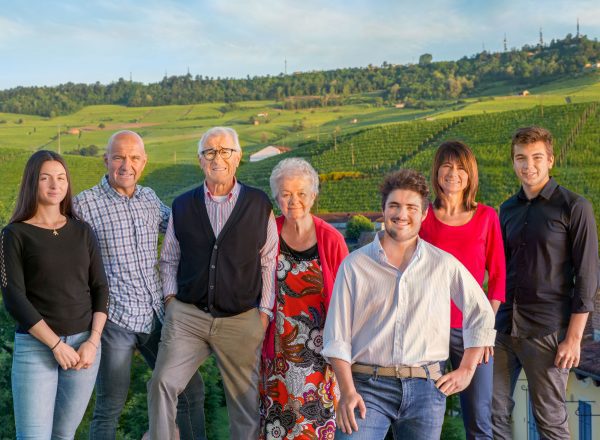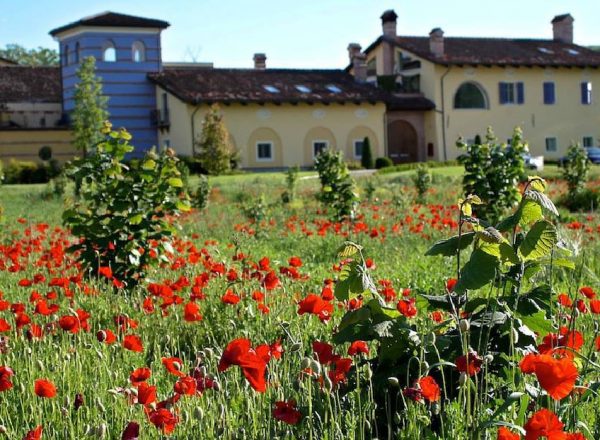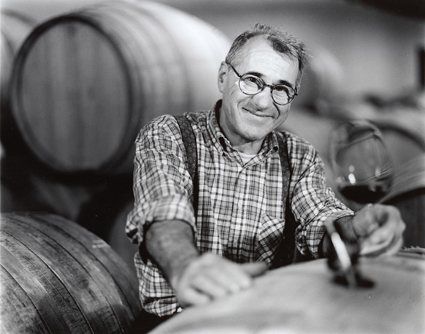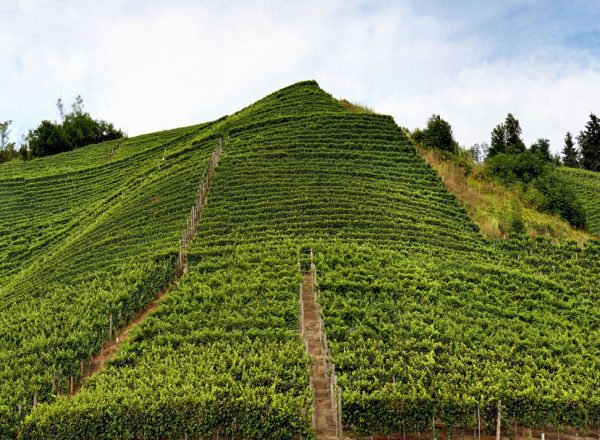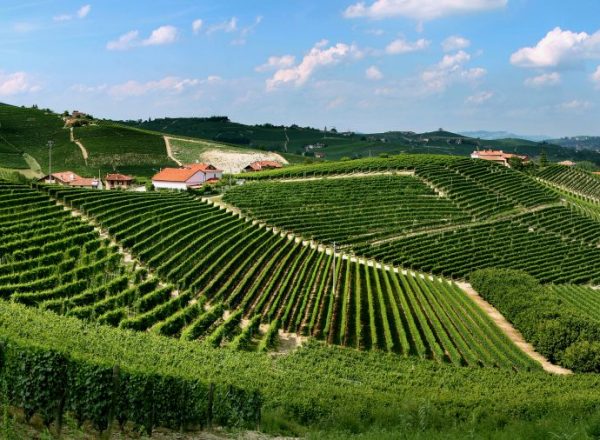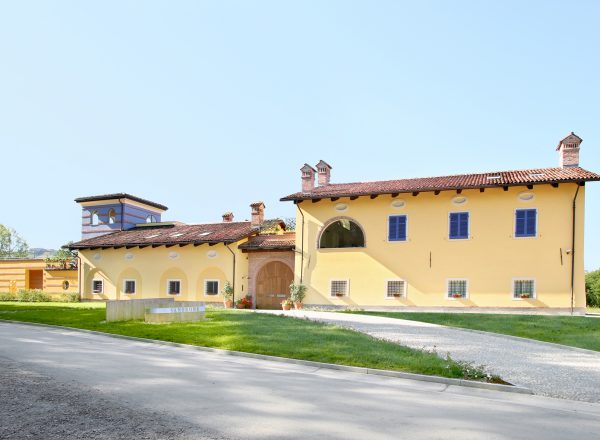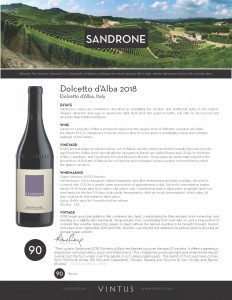
Sandrone
Dolcetto d’Alba 2018
Dolcetto d'Alba
Sandrone’s Dolcetto d’Alba is produced using Dolcetto grapes from 11 different vineyards, all within the Barolo DOCG. Sandrone’s Dolcetto sees no time in wood and is a remarkably robust and complex example of the variety.
VINEYARD

Sandrone Dolcetto d’Alba is produced using 100% Dolcetto grapes from some of Alba’s finest plots. There are four grape production areas, two in Barolo and the others are divided equally between Novello and Monforte d’Alba; more specifically the vineyards in Barolo are called Rivassi and Crosia;in Monforte d’Alba, Castelletto; and Cascina Pe Mol and Ravera in Novello. These areas are particularly suited for the production of Dolcetto d’Alba as the soil and the mesoclimates create a perfect environment in which the grapes can grow.
WINEMAKING
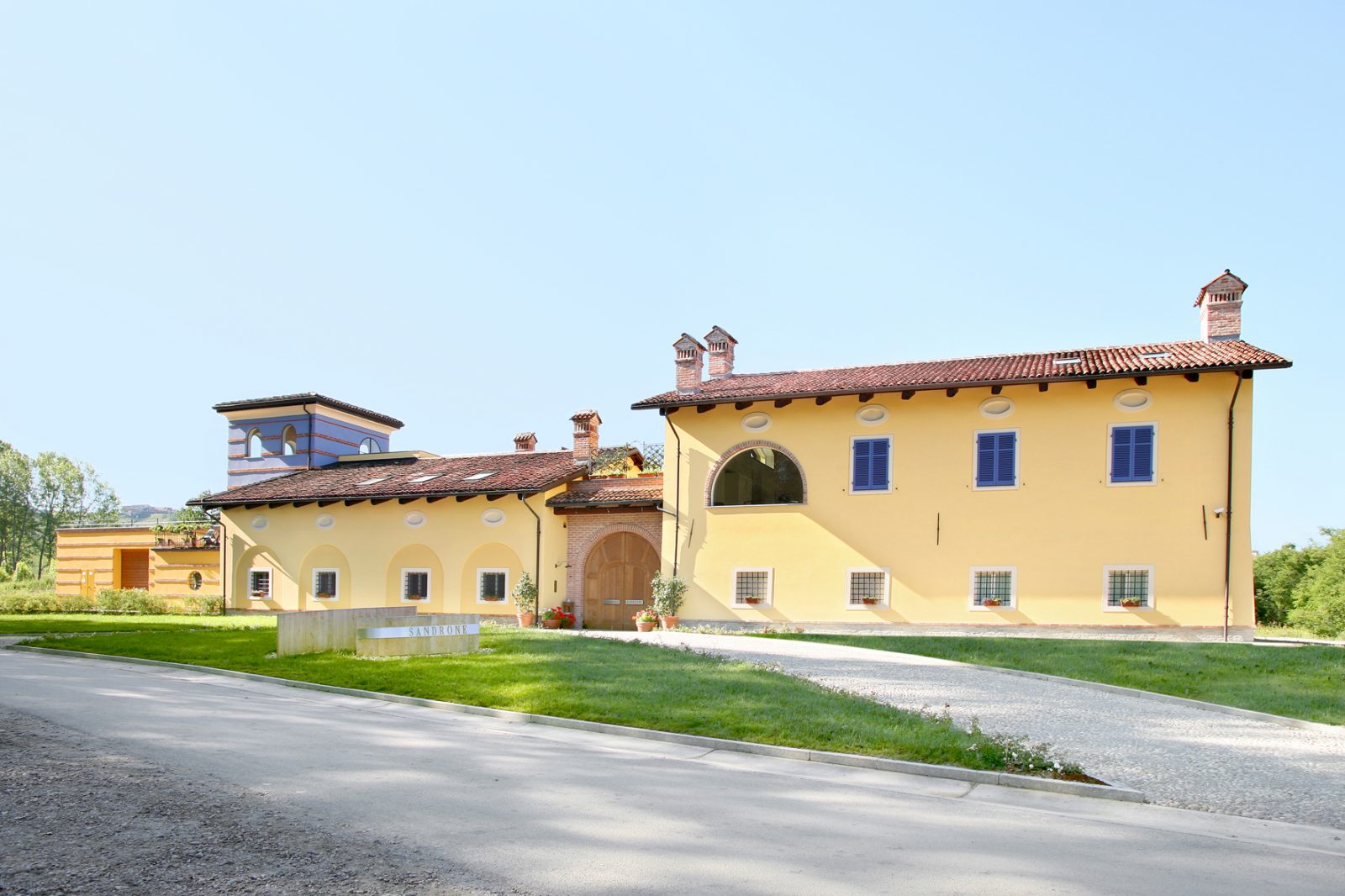
Each vineyard is vinified separately, and after destemming and light crushing, the must is covered with CO2 for a gentle warm maceration of approximately a day. Alcoholic fermentation begins about 24-36 hours later from native wild yeasts only. A gentle maceration takes place in upright open-top steel tanks for the first 5-9 days of alcoholic fermentation. After alcoholic fermentation, which takes 14 days, malolactic fermentation takes place.
VINTAGE
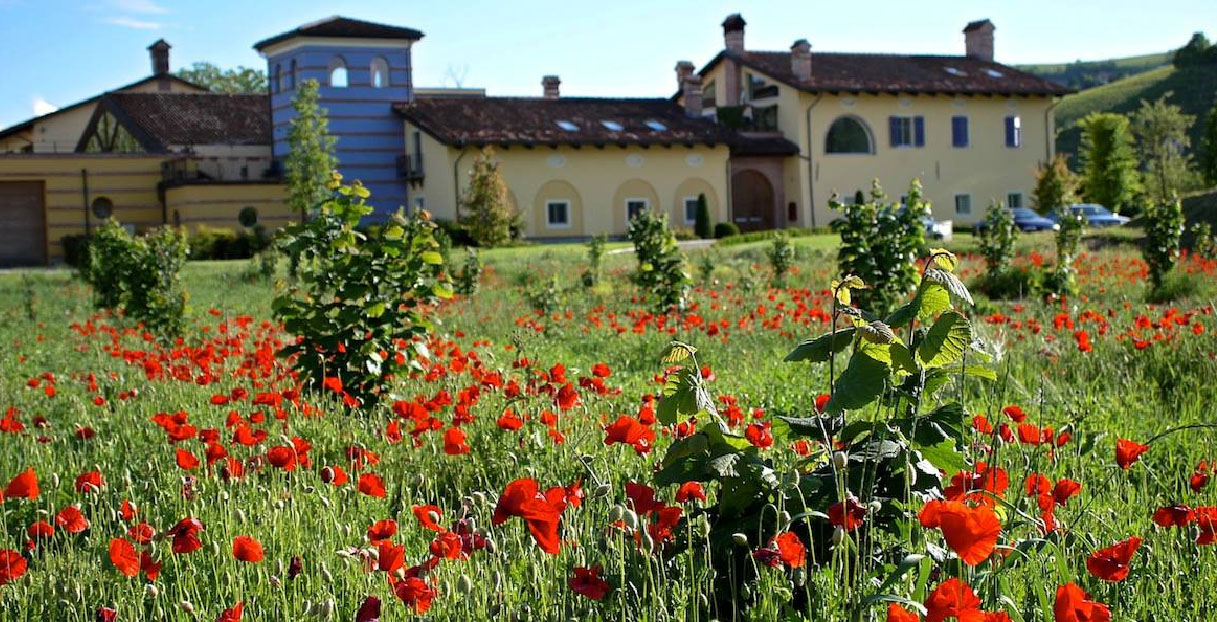
After the sweltering 2017 season, 2018 began with good winter snow and spring rains that helped replenish the dry ground. The wet weather continued into April, complicating the final vineyard work somewhat, and resulting in a slightly later bud break.
Flowering was under normal conditions and the beginning of the summer, in our vine-growing area, was characterized by occasional downpours that led to high humidity conditions. Much care had to be taken to achieve a healthy vineyard as Peronospora ran rampant when left unchecked by regular judicious applications of the correct treatments.
Green harvesting became necessary for nearly all varietals in order to curb production to within the limits provided for under the various production regulations. Development was gradual during the summer, with temperatures rising considerably from mid-July on, and a long period of constant fine weather helped the grapes to ripen without the harvest needing to be brought forward. Harvest was normal in relation to the previous, precocious vintage.
Harvest took place from September 12th until 29th, Dolcetto was the first red varietal to be picked, and it is showing an average sugar content. In conclusion, we can say that it has been a vintage in the traditional pattern which demanded the attention of vinegrowers in their management of the vineyard in order to achieve results which were better than had been expected at the beginning of the campaign.
TASTING NOTE
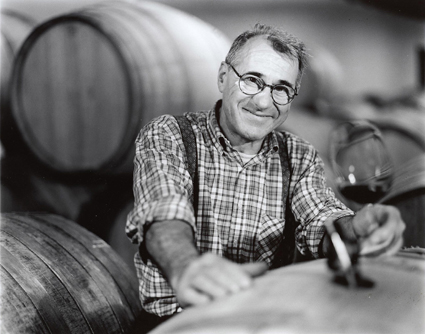
2018 Dolcetto shows the hallmarks of the Sandrone style. It is a young wine of complex and beautiful personality, with great aromatics. The color is alive and dense: ruby accompanied by elegant violet reflections. The fragrance is varied, firstly of fruit: pleasant hints of maraschino cherry, plum and small red fruits. This is followed by spicy notes of cinnamon, which are accentuated and harmonized as the wine evolves in the glass.
The flavor is dry, intense, vigorous and moderately warm, and concludes with a pleasant final hint of almonds. This Dolcetto d’Alba is an eclectic wine, able to accompany many of the various dishes of a meal.
Color
Red
Grape Varieties
Dolcetto
Appellation
Dolcetto d'Alba
Farming
Follows organic farming but has chosen not to seek certification. Minimal quantities of Bordeaux mixture and sulfur (as allowed per organic practices) are used to control mold and fungus, and fertilization every 4-6 years occurs with composted manure from dairy cows.
Alcohol
13.0%
Suggested Retail Price
$26.00
Reviews
"Rich, pleasurable layers"

Wine Advocate - July 24, 2020 "The Luciano Sandrone 2018 Dolcetto d'Alba has fleshed out over the past 12 months. It offers a generous disposition with blackberry, plum and dried cherry. This vintage has produced tight and streamlined results overall, but the fruit wraps over the palate in rich, pleasurable layers. The blend of fruit used here comes from Monforte d'Alba (Pe Mol and Castelletto), Novello (Ravera and Rocche di San Nicola) and Barolo (Rivassi)."
"Slender style that is actually very appealing"

Vinous - June 1, 2020
"The 2018 Dolcetto d'Alba is elegant, super-refined and all class. The 2018 shows all the richness that is typical of the Sandrone Dolcetto, but in a more slender style that is actually very appealing. There is plenty of varietal character in the dark fruit, spice and licorice flavors, but the 2018 is more about persistence than size. I loved it."
Trade Materials
Other Wines by this Producer
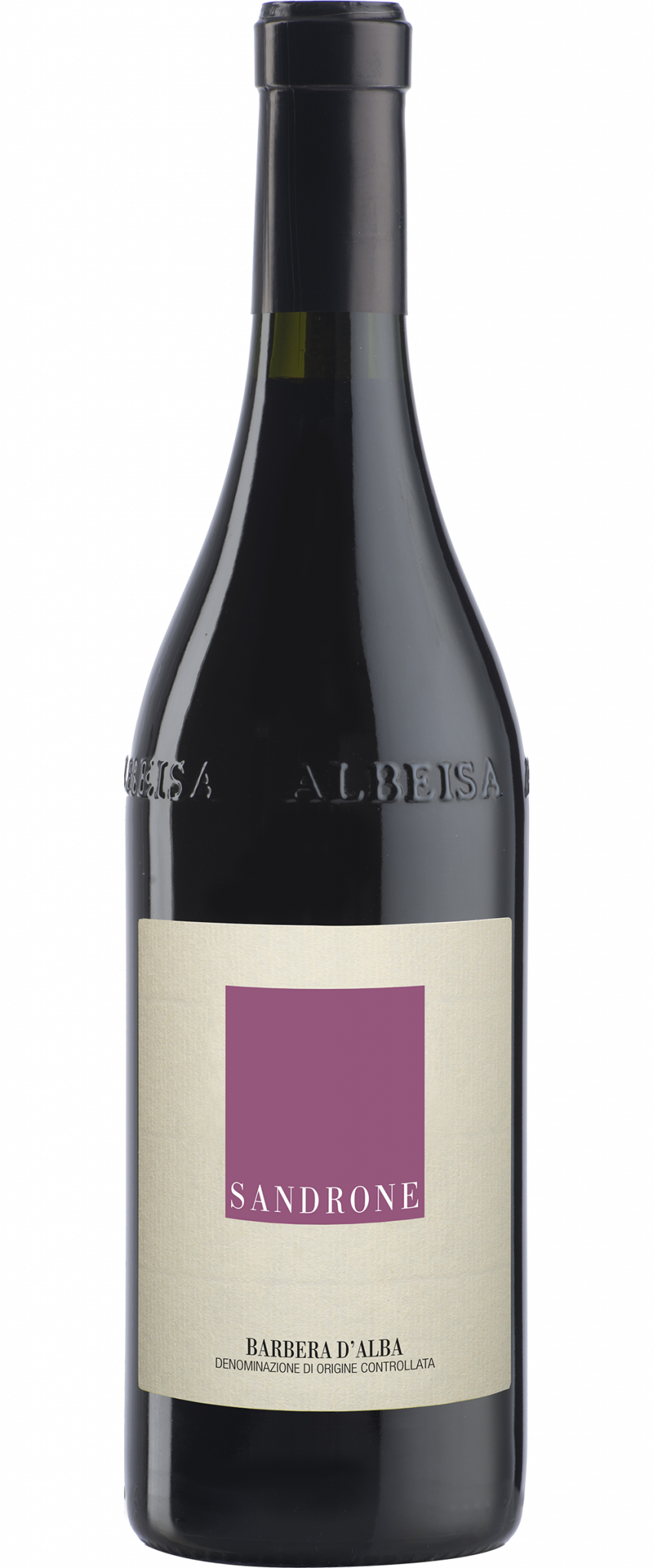
Barbera d’Alba
Barbera d'Alba
The Sandrone Barbera d'Alba comes from three vineyards: Merli and Rocche di San Nicola in Novello, and Cascina Pe Mol in Monforte d’Alba. It is widely considered one of the most intense and complex Barberas produced.

Valmaggiore
Nebbiolo d'Alba
Valmaggiore is the product of Luciano’s incredible passion for the Nebbiolo grape variety and its different expression. Just 15 miles away from Barolo, in the Roero region, Nebbiolo produces a lighter structure and ripe, smooth tannins that are not unlike those of Pinot Noir. This is not a “baby Barolo” or a second wine at all – it is a distinct interpretation of Nebbiolo from a completely distinct geographic zone.
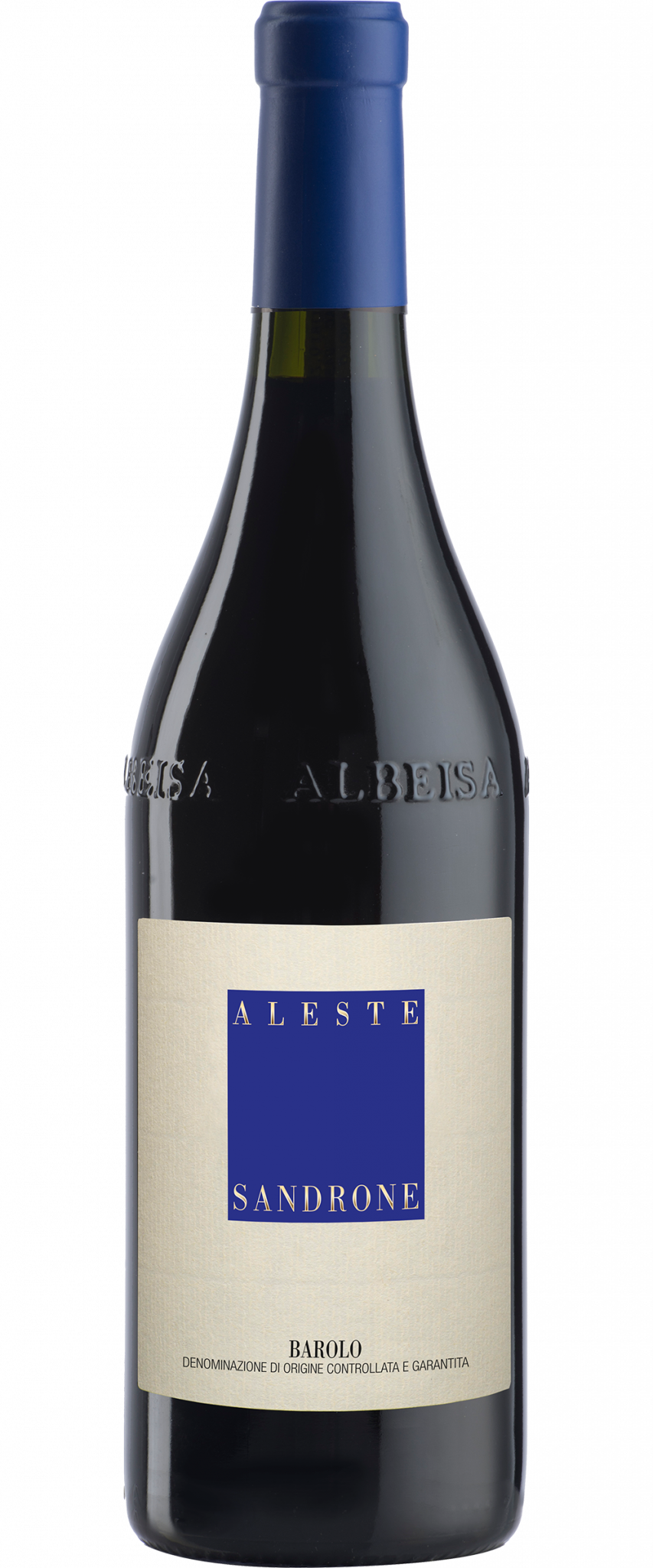
ALESTE Barolo
Barolo
A combination of the names of Luciano Sandrone's grandchildren ALEssia and STEfano, ALESTE is the new name for Luciano's first wine, the Barolo Cannubi Boschis, which garnered early acclaim with the international trade and press. This single-vineyard wine is typically dense and concentrated, but shows incredible harmony and balance.

Le Vigne Barolo
Barolo
Le Vigne is a wine created from four different Nebbiolo vineyards, each of which brings its own contribution. This union generates an exceptionally complex wine that is round and harmonious on the palate, with fruity and spicy notes, and this approach of blending together plots is in fact the traditional one in Barolo.
